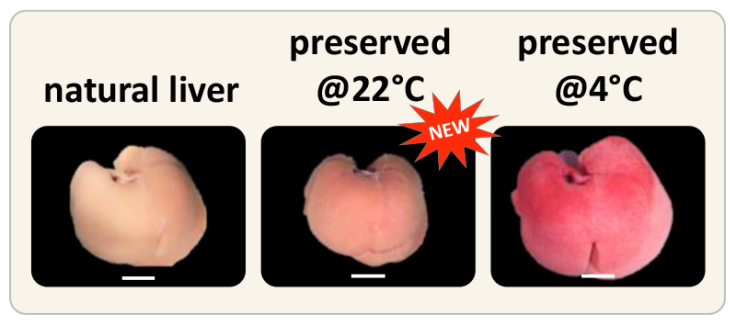After Liver Failure, A New Method Of Preservation Keeps Transplant Organs Healthy

More than 6,000 liver transplants, a delicate operation that hinges on timing, are performed each year in the United States. Now, researchers at the RIKEN Center for Developmental Biology have developed a new technique that extends the time that donated organs last and so should increase the pool of available time-sensitive organs. The procedure cools livers down to 71.6 degrees Fahrenheit while still supplying oxygen, resulting in more successful transplants than the current standard.
One catch: The method requires more finesse and testing before becoming available for humans, says lead author, Dr. Takashi Tsuji, a scientist who specializes in organ regeneration. “Optimizing the scale of the system for humans while still making it portable will likely take about three years,” he stated in a press release. “Once that is accomplished, we should be able to begin the first human trials within a year or two.”

Your liver looks like a football that is flat on one side. The second largest organ in your body, your liver weighs about 3 pounds and is located under your right rib cage. This vital organ processes what you eat and drink, turning food and beverages into energy and nutrients. Your liver also removes harmful substances from your blood.
A liver transplant is an operation where a sick liver is replaced by a healthy one. These healthy organs come from both non-living donors, who recently died (though incurred no liver damage), and living donors, who donate only a part of their livers.
Uniquely, the donated liver part as well as the remaining piece of the donor’s liver will grow to normal size within weeks. According to Dr. John Roberts, chief of Transplant Services at UCSF Medical Center, liver regeneration is not the same sort of regeneration that starfish are capable of; however, whenever your body recognizes there is not enough liver, it sends nutrients and signals to the liver, prompting it to get bigger. This process, Roberts says, probably happens within each of us every day, with our livers changing (slightly) in size to accommodate our body's current needs.
Typically, donor organs have preservation times of only about 12 hours for livers. Lengthening this time slot is the goal of the research team at RIKEN. And so they began by experimenting with temperature. When they cooled livers to 71.6 degrees Fahrenheit, they discovered the cells begin to multiply again when warmed. Using rats, they isolated their livers, placed them in culture, cooled the organs to 71.6 degrees Fahrenheit, and hooked them up to a perfusion system that pumped essential fluids, including oxygen-rich red blood cells, through them.
Next, the researchers compared the effectiveness of transplanting livers preserved by this new method against the current standard. The livers, preserved in the new way, grew to acceptable weights, while liver function returned to normal. The team also tested their procedure on rat livers simulated to mimic those donated after cardiac arrest. Even these livers showed signs of normal function once transplanted.
The researchers speculate their new method, once perfected and available for humans, will increase the number of donor organs, since organs obtained following cardiac arrest will become available. Projecting farther into the future, they say someday their methods might be used to grow whole 3D organs.
Source: Ishikawa J, Oshima M, Iwasaki F, et al. Hypothermic temperature effects on organ survival and restoration. Scientific Reports. 2015.



























